When Does Xenoblade 2 Get Good
When we see videogames nowadays we well-nigh always know what we're going to get. You look at The Final of United states of america and yous know not one of them is gonna have a practiced time. You expect at Red Dead Redemption and you know at that place are going to be at least seven cowboys. You look at Cyberpunk 2077 and y'all presume they could brand roughly seventeen Bladerunner references. You wait at pretty much any videogame and you can feel it — they are made clear in the way they're presented.
What comes to heed when yous see Xenoblade Chronicles 3? JRPG? Anime? British accents? Well, Persona's gameplay is pretty JRPG (whatever that ways), only it's cipher similar Xenoblade. Opus: Echo of Starsong's storytelling is pretty anime, but information technology's cypher like Xenoblade. And Fable is pretty darn British and, surprisingly, the about like game to Xenoblade in this silly listing, but information technology's nevertheless not really like to any meaningful extent. So… what is Xenoblade? Well, it'southward Terminal Fantasy. Except it'southward not. Let me explain.
Xenoblade is itself and loudly. With every iteration, it gets more itself and louder too. Xenoblade Chronicles 3 is the most loudly surefooted statement in the series' history, existence what it is without a hint of doubt throughout its hundred hours. It's the perfect videogame, inasmuch every bit information technology takes everything that makes the series special, turns it up louder, down darker, and spins the dissimilarity knob until all the colours are upside downwardly merely it'southward fine because your brain rights them anyway. It does what information technology wants.
Anyway, my editor won't allow me go away with that as an explanation, so now it's time to do my laundry (equally in, make clean upwardly my mess into something someone would actually want to habiliment (my words are the clothes, Pocket Tactics is the wearer, my editor is the dad who says "yous tin can't go out dressed like that young lady")). So, here goes. Better Clockwork Orange your eyes friends, information technology's gonna be a long one.

Firstly, listen to this track in a higher place. What do you lot get from the flute's tune? Hints of sadness or melancholy? Some tentative wide-eyed wonder? Well, information technology's a perfect microcosm of Xenoblade Chronicles 3 as a whole.
Everything that the flute expresses sums upward what the game is: sadness and wonder. The flute is such a perfect fit for this game that information technology begs the question; did the instrument impact the tone of the game, or did the tone of the game force its inclusion?
Either way, this is the cardinal to Xenoblade Chronicles 3's success, this blend of melancholy and wide-eyed optimism. It'southward so much sadder than annihilation that'south come before it in the series, and it helps the game'southward sincerity shine through, without being undercut by less serious themes that the previous games have often overexplored.
It sets this up from the outset too, with the story built around ii warring factions, Keves and Agnus, whose soldiers only live for ten years and fight to feed their own flame clocks with dead enemies as their fuel. This flame clock keeps them full of vigour, as information technology were, with characters feeling drained or less energetic when information technology'south depleted.
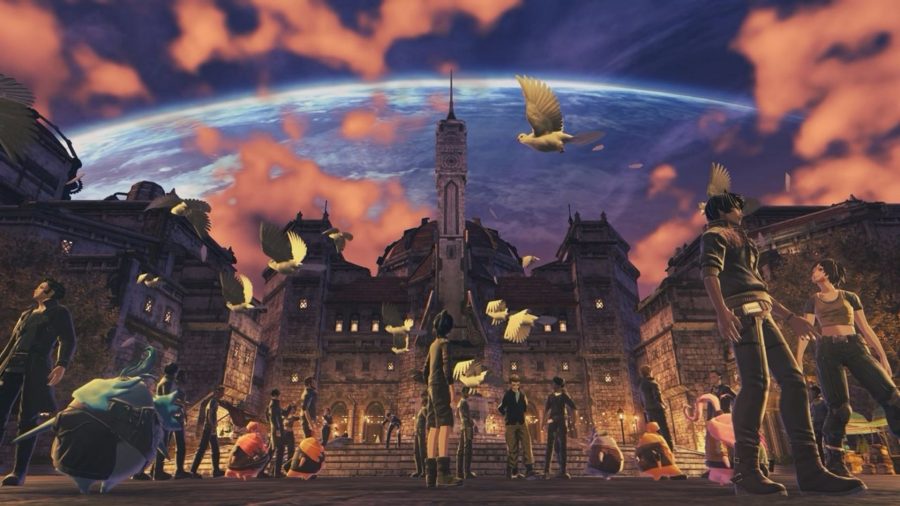
Nosotros run into our characters in the peaceful past, a city square bustling with children, a planet looming big in the heaven. Everything'due south nighttime, only at least no one'south dying.
Simply when we get to the nowadays, they're on a battleground. Noah, an off-seer, plays melodies on his flute to ship the spirits of the enemy onwards. He does this for a dead friend or foe, to the chagrin of his colleagues. At that place's Lanz, a musclehead with a eye, and Eunie, a bad-mouthed healer with tiny wings on her head. They're all soldiers of Keves.
On the other side is Mio, a true cat-eared off-seer who only has a few months left of her ten terms. Alongside her are Sena, a slight only strong hammer-wielding optimist, and Taion, a tactician who comes off as cynical (but he'd insist it'south pragmatism). They're all soldiers of Agnus.
They meet equally enemies, with both sides attempting to intercept a foreign convoy. On the convoy is a wrinkly homo – his wrinkles shocking these short-lived soldiers – who activates a big egg to allow our characters interlink into a more powerful class, helping them take down a big monster known every bit Moebius. This monster'southward outset words to usa are "oi oi", the game revelling in its Britishness more than ever.
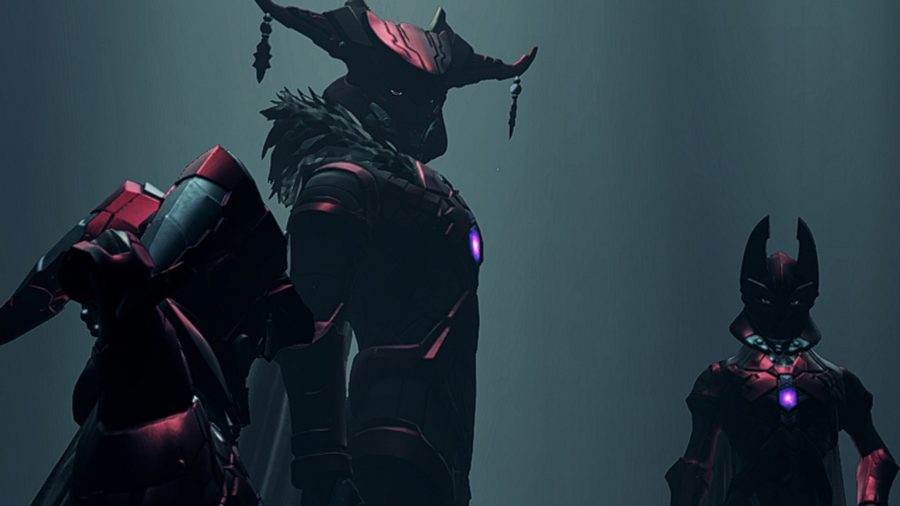
And so, now they're friends, because that monster marked them, marked them as Ouroboros, the 1 that will destroy everything… or something along those lines. This means that both Keves and Agnus are out to get them. They're fugitives with nowhere to get, except in one direction given by the wrinkly man. He tells them to become to the base of a giant sword that pierces the country in the distance. To a place called Sword March.
Permit'south just say, the journeying to the sword place is basically the game'southward introduction. It may take effectually twoscore hours, just you're learning every step of the way, whether information technology'southward fresh tutorials, new characters and side quests, or simply the deepening lore of this dark world. Yous pick up knowledge the closer and closer you lot get, and the world-building is exquisitely tied into everything you practise and meet.
Simply the magic of this story is in the way it's told, marking a dramatic step up from previous entries in the series. There'due south a cinematic flair in every cutscene, whether information technology'south the selection of photographic camera angle, the delicate use of flashbacks, or the sweeping score rising up behind a moment of heartbreak. Not only is the subject matter darker, but the way information technology's shown is also markedly better than anything that has come earlier information technology. It brings style by the bucketload.
There are shots that follow an object as it flies through the air, a gun falling out of a dead soldier's paw, the close-up eyes of a sinister villain, or the faraway cries of a fallen comrade. The camera can spin and whirl and loop with a sense of purpose in every cutscene. Certain, Xenoblade has always had a cinematic flair in its presentation, but this is something else entirely. Every moment is put together so carefully.
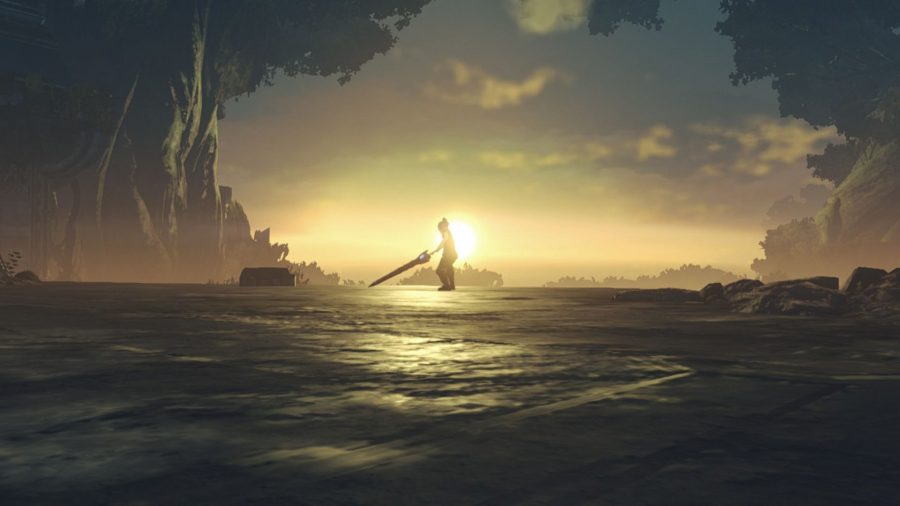
Because of this, the vi main characters develop in a sincerely interesting manner. They may be on a quest to change the globe, only their quiet hopes and fears, their subtle disdain or unlike interests, are all displayed with serious levels of care and attention. And then, of course, the way the grander narrative shifts and moves is a sight to behold. Everything's turned upwards louder, downwardly darker.
That's non to say there's no sense of humor. Rather, this game'south sense of sense of humor is keener and amend placed. There are all the same campy, slapstick moments, just they never feel jarring – they're pitched perfectly, designed to charm. And so at that place'south the language, which feels freer, with swear words, catchphrases, and slang used differently by different characters. It feels like the translators had a great time working on it.
So there'southward the actual gameplay. Xenoblade Chronicles 3 offers upward the most lavish earth in the serial to date. Information technology might fifty-fifty be the nearly impressive world on the Nintendo Switch. Everything's massive, from the mountains to the monsters, highlighted with bright colours, foreign structures, and endless expanses total of wonder.
But this wonder is notwithstanding combined with the game's specific melancholy. For example, at that place are soldiers fighting over the different landscapes, and you can cull to support one side or the other, gaining a pretty inconsequential reward. All they actually do is reconfirm the endless disharmonize.
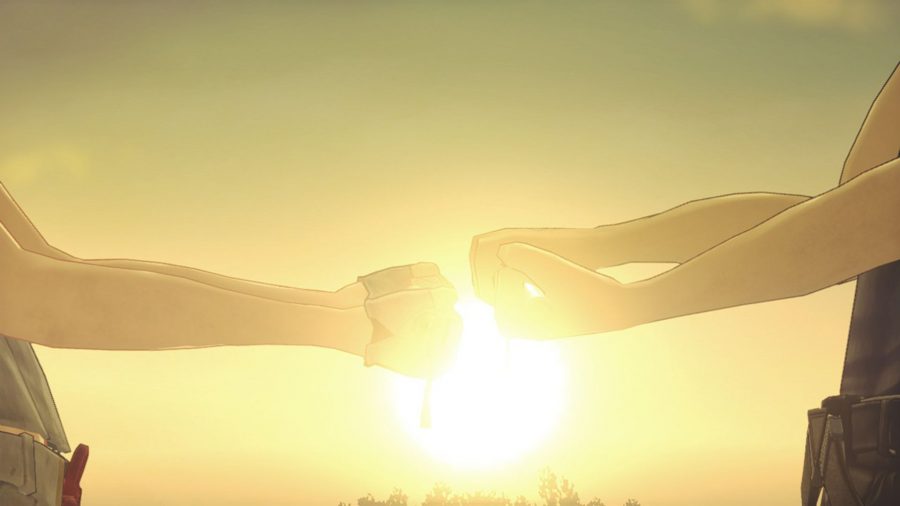
Then at that place are the husks of dead soldiers, which need to be sent off. These moments offer piffling in terms of actual value – simply an affinity bonus with the colony they're from – but instead are merely quiet, cute spaces where the HUD disappears, and our off-seers play a heartwrenching melody on their flute, before tiny droplets of light float upwards and their body dissipates. Everything feeds back into this newfound sombre tone.
The variation in the earth is the key to its success. One vast desert tin lead into a wide-open up plateau, onto deep, damp caves and into snowy mount passes. You're never trapped in 1 locale for too long. If y'all desire to discover something new to look at, the game lets you.
There aren't just landscapes, notwithstanding, as interiors are simply equally keenly synthetic. There are big hangars, winding tunnel systems, and military bases that offer a completely different atmosphere. Some of them are basically dungeons. The Keves Castle dungeon is particularly great — twisty and labyrinthine, reminding me of Tokyo Delusion Sessions or Shin Megami Tensei.
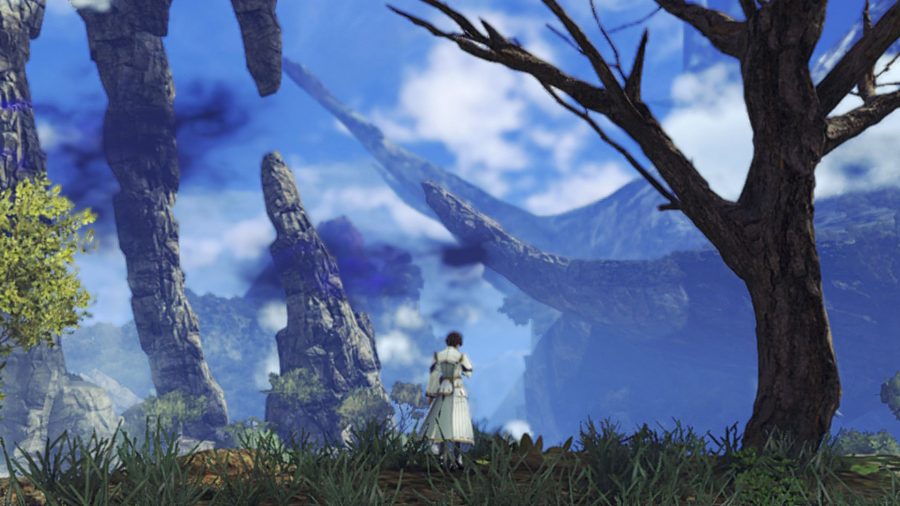
Then there are the colonies and cities. This is where the Xenoblade series frequently shines (remember Goldmouth or Torigoth in XC2? Those places are exquisitely designed), and nothing has changed here. City structure is often underappreciated and underserved in sprawling RPGs, and Xenoblade Chronicles 3 is as expert as it gets, in terms of having some of the best, virtually honest architectural nous out there.
If you practise desire to linger in these spaces there's quite a lot to practise, likewise. At that place are lilliputian collectables, traversal puzzles, and, of course, lots of monsters to fight. Various side quests offer even more, the majority of which are small, focused affairs based on supporting 1 of the many colonies you lot free on your journey.
These side-bits aren't overly impressive but do offering a look into the different colonies and their nature, and completing quests gives you analogousness bonuses to help you on your journey, like faster movement speed and increased rarity in enemy drops. Smaller side quests are just an excuse for smaller stories to play out – they're never that interesting gameplay-wise, but the scenes that play out because of them often are.
That's not all there is on the side, however, as the new hero mechanic brings with it a whole new blazon of side-quest. Heroes are a seventh political party fellow member that you lot can recruit and add to your team, but to recruit them you have to consummate their quest. These missions are extremely good, mainly because the characters in them are all uniquely interesting. It's the first time the series has ever had genuinely fantabulous side missions.
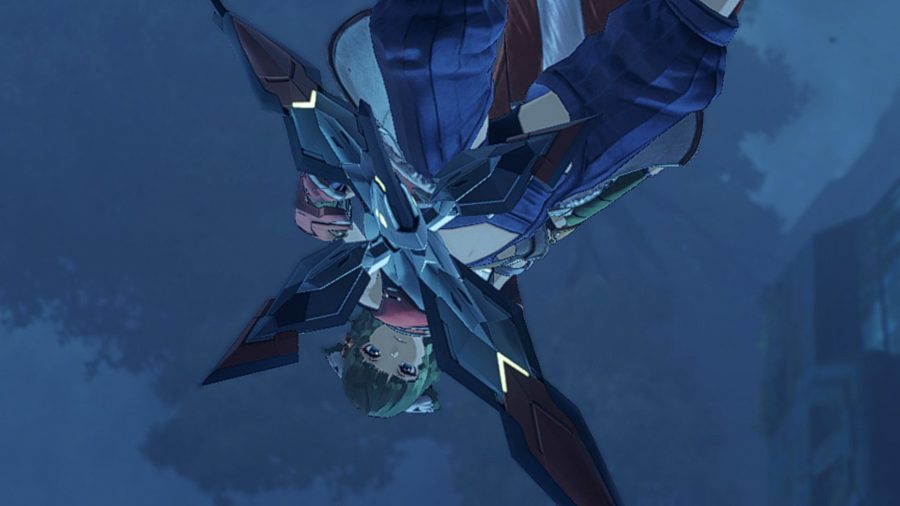
Ane mission may let you into the middle of a colony, spend time with its leader, and sympathize the nuances in the mode they lead, while some other may be a long-fought battle through layers of foes but to get to the colony in the first place. The mechanical differences in the mission too feed into the quest's story itself, making all of them a holistic experience.
In that location'southward 1 specific hero quest that sums upwardly the ethos of Xenoblade Chronicles 3. Just like the majority of these missions, the last aim is to free a colony from the shackles of the flame clock and the cycle of killing that the inhabitants are stuck in. So far, then standard.
This colony, withal, has been off the grid. Their rulers rarely visit, thinking it an unusable part of their web of pawns. So the colony folk are barely surviving, their flame clock close to running out completely. They themselves have some sort of suicide pact, or at least something shut to that type of thing – (up louder, down darker).
Once you complimentary the colony, the people see some ray of hope. They're worried equally they're used to having measly supplies from on high. But they turn around and determine they'll grow their own food. They till their fields and acquire irrigation. They seize their independence. That message runs through the rivulets covering every inch of XC3. This game has kindness, this game has soul.
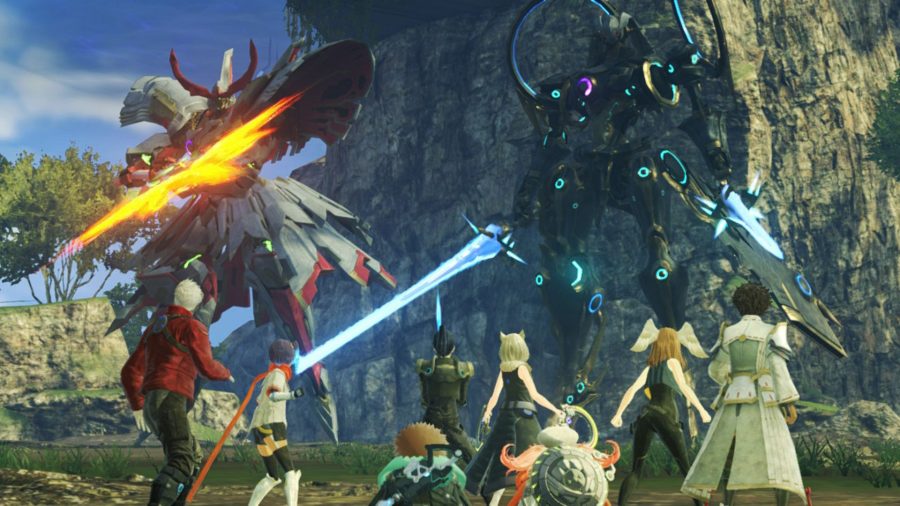
Anyhow, these heroes tin sometimes give you lot new traversal abilities too, that can let you do stuff like slide along ropes stretched across crevices or climb upwards leafy walls. These abilities and then permit you lot get to areas that were inaccessible before. Some even give you admission to new quests. It's a welcome layer that adds a bit of value to backtracking, though it'due south not some dramatic Metroidvania overhaul.
And then, there'south the gainsay. Y'all have your six main party members, a 7th hero who can be switched out for a different one on the fly, and a bevvy of different mechanics layered on top of each other. It'southward basically a combination of the combat systems from the other two mainline games in the series.
Y'all start with auto-attacks, basic moves to exercise while you wait for arts to charge. Arts are more than powerful attacks that tin cause status effects. For soldiers of Keves, these arts charge by waiting for them to fill up up, merely like in the first game. For soldiers of Agnus, these arts charge up by automobile-attacking, just like in the 2nd. The possible meaning of this is immediately intriguing, but I'll let you lot ponder on that yourself.
Arts, when used correctly, charge up a more than powerful art. Using arts correctly depends on your class. At that place are six main classes, and and then each hero has a unique class (in that location are a lot of heroes, so you finish upwards with lots of classes). Classes accept different roles – attacker, defender, and healer – and having the right combination is fundamental.
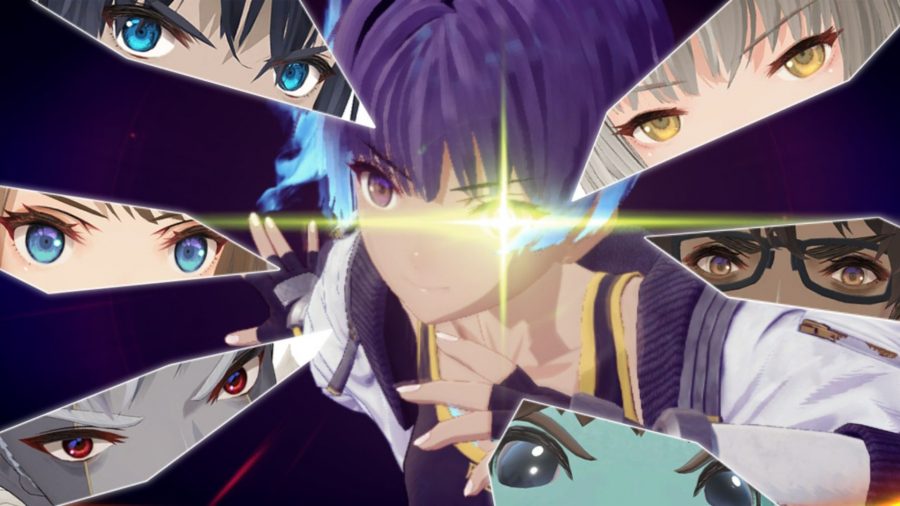
There are ten ranks for each class that your characters can move up. In one case fully mastered, you can so use arts from a mastered grade with a new 1, creating new combinations. These are master arts and can be combined with your original arts into something chosen fusion arts. The use of fusion arts increases your interlink level.
Interlink levels denote how powerful your characters will be when they combine into their Ouroboros form – kind of like a Ability Ranger morphing system that looks similar a wacky Bionicle – which then has its own unique arts and abilities, though you tin can just exist in this course for a stock-still corporeality of time.
Using all of these systems properly and so also charges up your chain set on meter. Chain attacks turn the action combat into a i-sided turn-based arrangement, tasking you with chaining arts together to make full some other meter which multiplies your harm. Chain attacks can deal massive impairment and behave differently depending on some stuff with your Ouroboros interlink level.
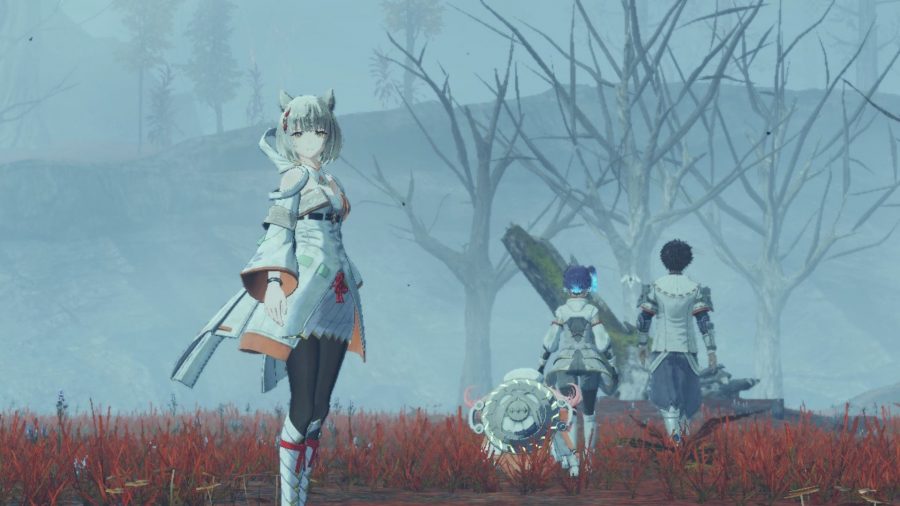
All of this plain explanation of combat is to make clear one thing: every system interacts with another. The magic of fights in this game comes out when you sympathize how this heap of systems all works together. As y'all move upwardly the hierarchy of systems, from the auto-attacks at the bottom all the way up to the concatenation attacks at the top, you can get into a land of period that feels sublime.
Chain attacks alone can offer a magical feeling, equally the oblique nature of how to get successful bondage becomes clearer and clearer the further you lot get into it. The game doesn't explicitly explain what it wants from yous during a chain assault, but you lot intuit it, which in turn lets you feel like y'all discovered it.
Meanwhile, arts can be cancelled into each other. This means that if you activate one art simply equally the terminal one hits, information technology increases the speed of your attacks and fills up various meters more quickly. Cancelling arts helps support this feeling of flow excellently.
In spite of all this, I frequently find myself using the auto-boxing system in the overworld, outside of large story segments. That's just because those shorter battles rarely let you to make the most of these gainsay systems. When it really shines is the behemothic boss battles, which permit you showcase your mastery of these systems and the way they intertwine.
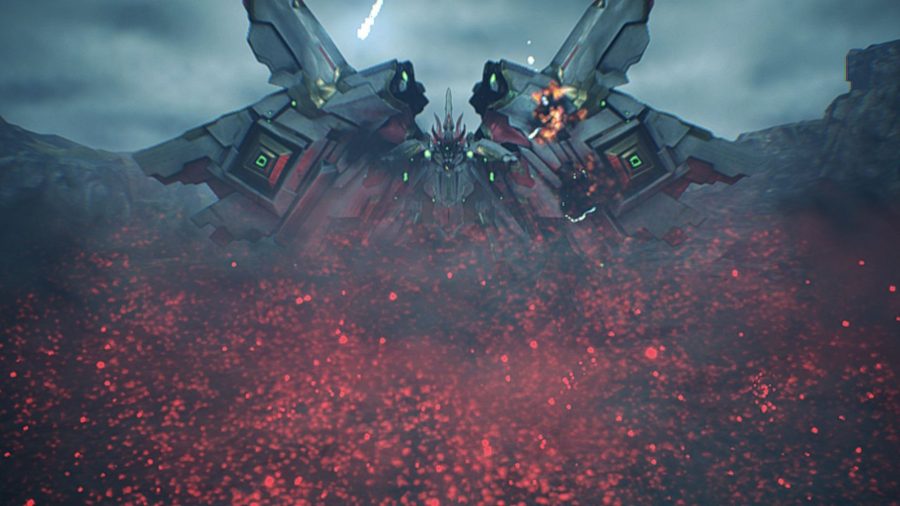
This big pile of stuff gets even bigger when you get into the menus, the admin. Characters accept unlike skills they tin interchange, different gems and accessories to broaden certain things, and a whole split up Ouroboros skill tree. This is dumbo and near-endlessly micromanageable. You lot really take to desire to sink your teeth into it to get the virtually out of it. I don't think Xenoblade Chronicles 3 will advantage the more tentative player anywhere near equally much as a dedicated i. It might fifty-fifty push them away.
Where information technology rewards everyone, however, is the presentation. Of course, the earth is big and gorgeous, as I've said. Simply the soundtrack, likewise, takes a footstep forrard for the series. Non only is the heartwrenching pianoforte and driving guitar that Yasunori Mitsuda excels at as good as ever here, but there are new elements, adding to a darker, more dystopian tone.
From the get-go, bubbles synths drive alongside fast-paced drum beats, similar a hyperactive Bladerunner soundtrack, adding to the overall feeling of sci-fi this game presents. Sure, Xenoblade Chronicles 10 has that, merely the other two mainline games feel much more like fantasy lands, rather than the far-flung dystopian future of XC3. (This isn't but a tonal change, it feels deliberate for story reasons, reasons best left implied for now).
Luckily, all this presentation is supported by solid performance. I had no issues with the framerate, and the resolution in docked manner is excellently detailed. It'south less impressive in handheld just all the same looks better than it has any right to, because the vast expanses of land, numerous creatures, and distant obelisks on screen.
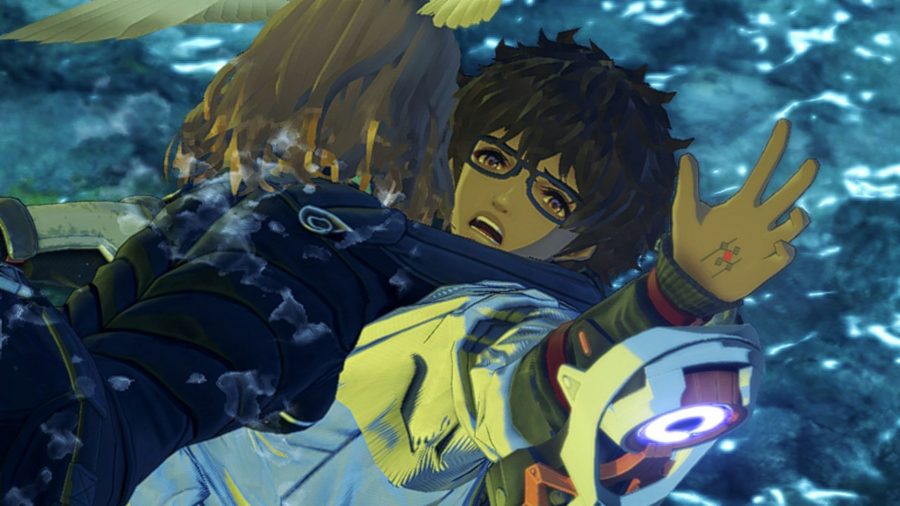
At that place are many smaller things I'd like to highlight before we wrap upwardly: a) the fonts are big and nice; b) the story is even so genuinely bonkers, even if information technology'due south darker, it hasn't lost its delightful absurdity; c) the character designs are exquisite – even inconsequential characters wait amend than Rex; d) I know I've already mentioned the music, but crikey, it really is beautiful; e) the gaps between voiced lines of dialogue are pretty reasonable – they're however besides long, but merely simply, whereas previous games' line-gaps were big enough for the both of usa, if you know what I mean; f) the title screen makes me want to cry; yard) at that place are people with true cat ears and people with horns, and I dear it.
Notwithstanding, after all that praise, in that location are a handful of tiny things I don't vibe with: a) some menu things brand no sense, e.g. y'all can marker all new items in your inventory equally 'seen' to get rid of the notification dot, but you can't practise the same with tips, so you have to manually ringlet through all of them if you're irritated by notification dots; b) the subtitles include things similar 'gasp' or 'wailing cry', which is adept for accessibility, just go far optional! It feels like a split-second spoiler before a heartbreaking noise from the voice actor; c) larger assail animations no longer have QTEs like in XC2, and so you but watch them play out… This is tedious, bring back the QTEs!
In summary, Xenoblade Chronicles 3 has people with cat ears and people with horns, and I beloved it. It's too very pretty, the characters are absurd, the combat is engaging, and the whole package is presented with a level of prestige beyond the expected amount. Certain, there'south no mind-blowing rope physics that took the devs a million hours, but at that place's something else here. Something I can't quite explain any more than I already take. Something special.
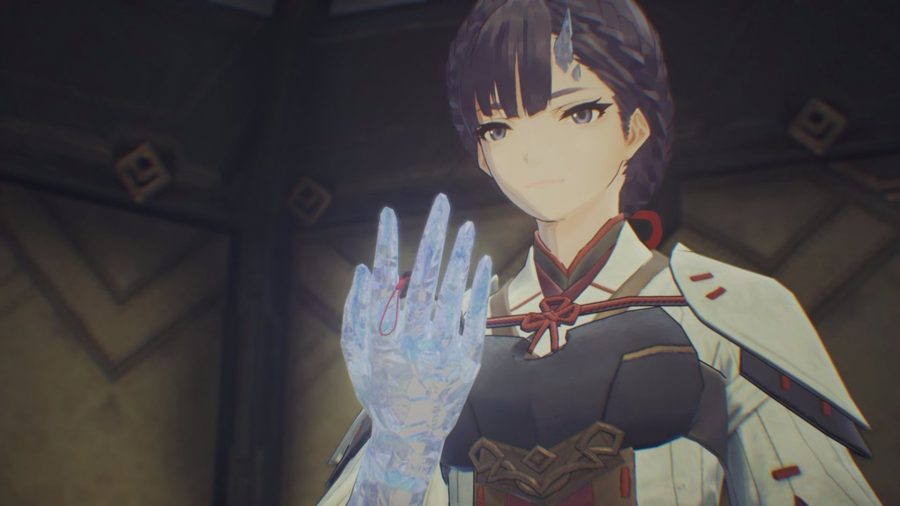
The characters change, the world changes, the combat develops, the colonies evolve, the noise gets louder, the jokes get quieter, the endgame approaches, and… It merely envelops you. This world, its proper nouns, its applesauce – its highs have been pushed up to their loudest points, its sadness drummed down to its darkest yet.
I think that's my only takeaway from Xenoblade Chronicles iii. For a series that can rebound and then many people due to its certain idiosyncrasies, it's such a wildly uncontainable feeling to run into it double down, even so nonetheless feel more than outgoing than ever. The gainsay is more complex, the story longer and wilder, the characters deeper and closer, the emotion soulful and night and jovial and absurd. It'due south something expert, choosing to be more itself, to increment its unique good. I observe that heartwarming.
If y'all're thinking of picking up the game, take a wait at our Xenoblade Chronicles 3 characters, Xenoblade Chronicles 3 heroes, and Xenoblade Chronicles timeline guide for more than.
Xenoblade Chronicles 3 review
Xenoblade Chronicles 3 is itself and loudly. It is what it is without a hint of doubt. It's the perfect videogame, inasmuch as it takes everything that makes the serial special and turns information technology upward louder, downwards darker. It does what information technology wants.
x
When Does Xenoblade 2 Get Good,
Source: https://www.pockettactics.com/xenoblade-chronicles-3/review
Posted by: redmanforthis.blogspot.com


0 Response to "When Does Xenoblade 2 Get Good"
Post a Comment